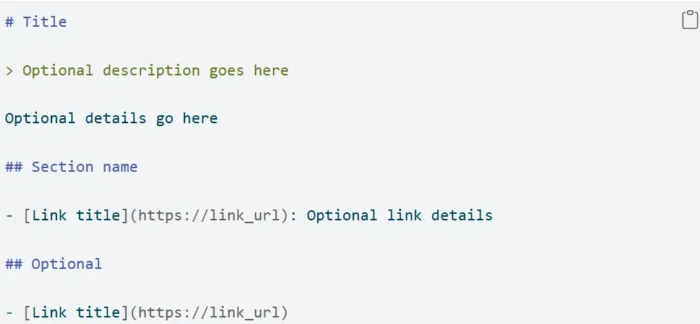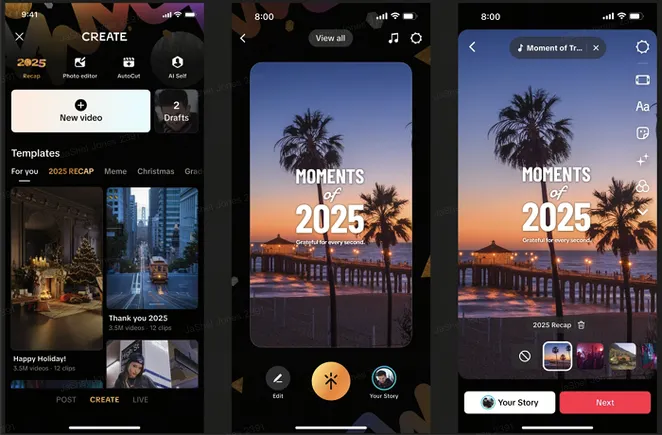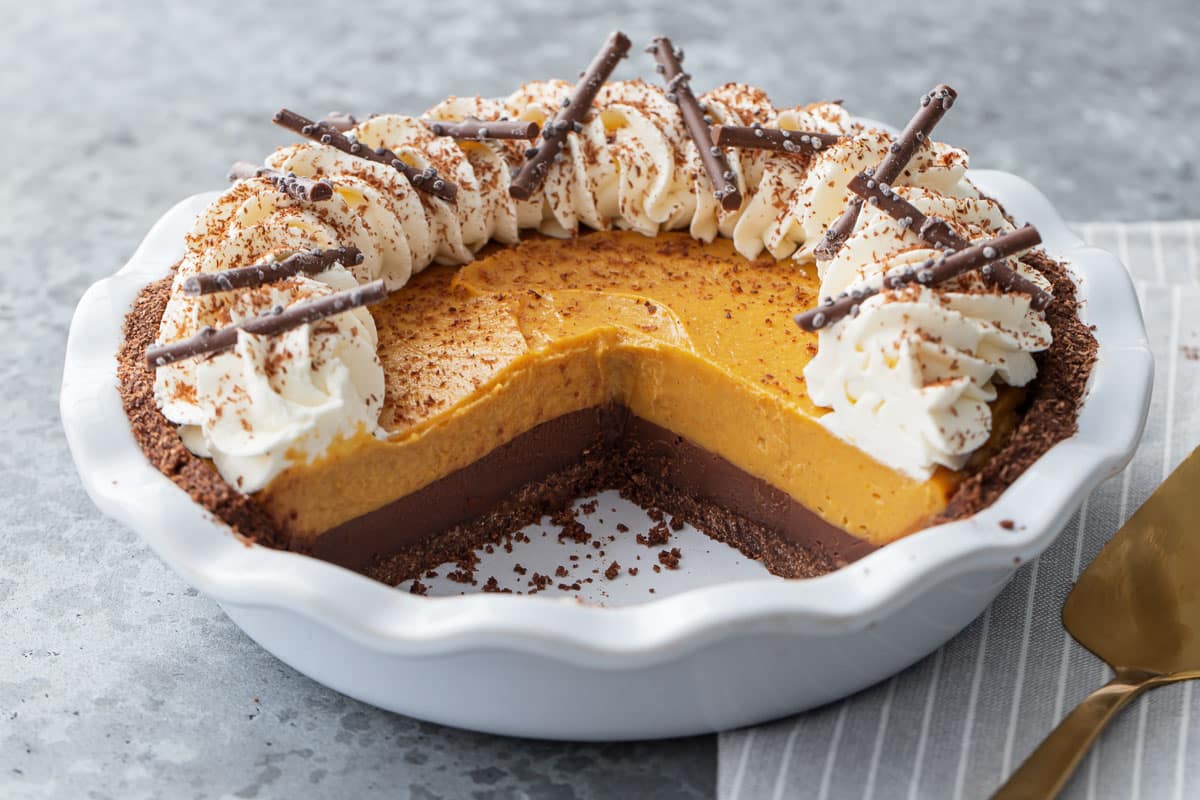Short-Form Video Dominance: The Future Of Engagement In Social Media via @sejournal, @donutcaramel13
Short-form videos are here to stay. Explore the opportunities for businesses on TikTok, Instagram Reels, and YouTube Shorts. The post Short-Form Video Dominance: The Future Of Engagement In Social Media appeared first on Search Engine Journal.

Short-form videos are no longer a passing trend – they are here to stay.
Short clips on platforms like TikTok, Instagram Reels, and YouTube Shorts have taken over our feeds and continue to thrive on social because of their sharply edited content and low investment requirement.
With YouTube Shorts boasting over 50 billion daily views and TikTok surpassing 1.6 billion monthly active users, it’s clear that short-form videos are dominating the social media landscape.
Whether you’re a social media manager, creative artist, B2B professional, or anyone who uses these three main platforms for their business, this article will explore opportunities that may work for your key vertical.
The Evolution Of Social Media Formats
After the massive uptake of TikTok back in 2018, Instagram and YouTube responded with their own version of video shorts.
Each of them brings their own unique selling points to compete for views. Here’s what you need to know at a glance:
| Platform | Launch | Key Stats |
| TikTok | August 2018 | Over 1.6 billion active monthly users worldwide. It’s the most used social media platform for short-form videos, with over 40% of U.S. users preferring it vs. others. Android users spend an average of 34 hours a month on the app. Video maximum length: 10 minutes. |
| Instagram Reels | August 2020 | This feature is available to Instagram’s 2 billion monthly active users. Close to two-thirds of users spend their time on Instagram. IG Reels ranks third on U.S. user’s preferred platform for watching short-form videos. Reels maximum length: 90 seconds. |
| YouTube Shorts | March 2021 | YouTube has over 2.5 billion monthly active users. 23% of U.S. users prefer YouTube Shorts for short-form videos, making it second place for preference. YouTube Shorts maximum length: 3 minutes. |
Let’s take a closer look at each platform:
YouTube Short’s Evolution
Out of the three, YouTube is the one that evolved the most and has been the longest-running platform – known for long-form user-generated content for more than a decade now.
From the 2010 homemade comedy skits (Nigahiga, Fred, KevJumba), Let’s Plays (Pewdiepie), and beauty gurus (Zoella) to travel vlogs (Casey Neistat), kid content (MrBeast), and energetic livestreams (IShowSpeed) – it’s quite a jump in production value.
Speaking of vlogs, YouTube helped popularize this concept.
But slowly, short-form content presented some problems for YouTube’s Partner Program. YouTube partners make money from ads, which are frequently shown in long-form videos.
The rise of short-form content presented a financial challenge for creators not used to producing short videos.
Most creators mentioned earlier are no longer at the top like they used to be, although some have quit due to personal reasons, and others have shifted career focus over time.
Also, with the rising star TikTok, which showcases short clips only, and Instagram Reels, a 2020 product that followed suit, I can imagine that YouTube felt pressured to create a new format to keep up with its contemporaries.
It began testing in India in 2020 and debuted globally in 2021, with its video limit expanding over time up to five minutes.
YouTube Shorts succeeded, given that 20.7% of its audience are ages 25 to 34, making them the largest age demographic. The platform had over 2 billion monthly logged-in users at the end of July 2023.
Now, YouTube Shorts are longer. Keep in mind that last October, YouTube announced that YouTube Shorts can now be three minutes long, maximum.
This is in contrast to TikTok’s 10-minute maximum and Instagram Reels’ 90-second maximum length.
Further reading: YouTube Explains How Shorts Algorithm WorksInstagram Reel’s Evolution
Instagram was first launched as a photo album-style platform. It then added video capabilities in June 2013 so that Instagram could rival the now-defunct video-sharing platform, Vine.
Seven years later, in August 2020, Instagram Reels was launched so that it could compete with newcomer TikTok.
With music, augmented reality (AR), and editing tools, it became easy to create and post short videos on Instagram – all videos under 15 minutes are also automatically converted into Reels as of July 2022.
TikTok’s Evolution
As for TikTok, it underwent the least amount of evolution. It started with Musical.ly, a lip-syncing app that was acquired by ByteDance, the Chinese tech company.
They bought it back in 2018 and merged its user base with its product, TikTok. Thus began TikTok as we know it, and it had already featured very short clips – think 15 seconds, max.
TikTok is the most popular short-form video platform of the three. According to DataReportal, it rivals and beats Instagram’s reported ad audience by 30%.
Although YouTube is the one to beat when it comes to daily use and opening of the app, TikTok is king when it comes to time spent on the app (34 hours on average per month), compared to YouTube’s 28 hours and 5 minutes and Instagram’s 15 hours and 50 minutes.
That’s amazing, given that much of YouTube activity is spent on it being played in a browser. Additionally, YouTube has the most significant number of active users.
But don’t overlook Instagram. Its “audience affinity,” according to GWI, makes it the world’s favorite app, with 16.5% of all users selecting it vs. all the others, twice more than the 7.4% that chose TikTok.
Instagram is also set to become video-first and drives half of Meta’s revenue in the coming year, according to a report by Jasmine Enberg of EMARKETER.
Why Short-Form Video Is Winning
In this research paper, Shorts on the Rise: Assessing the Effects of YouTube Shorts on Long-Form Video Content, 250 participants were studied, and the outcome was that Shorts were indeed more engaging than the average YouTube video. (Note: While this is a limited study, it may still offer insight.)
Long-form video vs. Short-form creators: Views, likes, and comments were compared. And spoiler alert: Short-form videos from short-form creators won views by a landslide in the views category and only lost out on comments.
 Screenshot from Shorts on the Rise: Assessing the Effects of YouTube Shorts on Long-Form Video Content, used under CC BY 4.0. No changes were made.
Screenshot from Shorts on the Rise: Assessing the Effects of YouTube Shorts on Long-Form Video Content, used under CC BY 4.0. No changes were made.
Short-form videos are 2.5 times more likely to receive more engagement, and 85% of viewers prefer videos with a duration of 15 seconds or less.
This makes it useful for SEO and a brand to increase user engagement on the page.
Also, scaling remains a big part of the reasons behind the rise of short-form videos. It’s not just the viewers who benefit from shorter videos, but you as a creator.
A 15-minute video takes fewer resources to create (and can be spliced from existing long-form, pillar content).
Repurposing content works perfectly well in this example for Zillow, a real estate and rental marketplace, explaining whether it’s a buyer or seller’s market, depending on where the customer lives.
The long-form video has eight likes and is barely two minutes long.
And here’s the Shorts version. While it’s not an exact clip from the long-form content, it got over 574 likes at the time of writing and is only 39 seconds long.
Takeaway: Educational content in digestible snippets can work wonders for your brand, whether you’re in real estate, law, or retail.
Zillow’s new market heat index chart didn’t have to be presented against a corporate backdrop, and notice how simply the representative is dressed.
The real estate market could be intimidating for beginners, but this presentation seemed simple enough to understand while being concise.
Overall, it leaves me with the impression that the brand is approachable, and will probably entice more customers to learn and try out their app.
While it works well for B2C, it also works for B2B SaaS, as they have the potential to make it personable and highlight their services.
Here’s how Shopify appeals to its target audience: online entrepreneurs using relatable skits as short-form content on TikTok.
@shopifyall it took was a single stitch for @mel’s crafty coRNer 🌈🫶🏼 to spin up a thriving craft business
This one presents the emotional journey of an aspiring entrepreneur with a nursing degree who wanted to set up her craft business.
She hit the ground running and thrived, thanks to Shopify. It highlights the brand’s unique selling point as a retail point-of-sale system without trying too hard – all in 45 seconds flat.
Prediction For 2025: The Shift In Creator Strategies
I’m predicting the rise of multi-platform influencers – people who shine on all platforms and aren’t celebrities who have worked to become famous online.
TikTok influencers who are unknown on Meta exist by the ton and vice-versa.
Old-school YouTubers may look into TikTok monetization and try to diversify their content to bite-sized formats or give product reviews with a yellow basket.
They could also hire a social media manager to make sure they star on all channels. The only platform that has good integration for crossposting is Meta.
By next year, creators will be trying their hand at other platforms and seeking new audiences there, and agencies can get partnerships with them that really tie in together with their social media strategy.
Finally, creators will shift and incorporate more mixes of short- and long-form content, or dedicate new channels to:
Solely to breadcrumb their viewers into watching the full version, like movie teasers and music video releases. Create an entirely new art, stories, memes, etc., worth 15 seconds long.There Is No Shortcut: Challenges For Your Brand
The competition is fierce across various niches. Beauty creators, dancers, and even doctors are becoming dual-platformers.
Short-form videos have the potential to attract new customers, so everyone wants to demonstrate their expertise in 15 seconds.
I believe talent and great storytelling will triumph on the right platform – as long as they are optimized.
Expedia, the travel tech company, does it well across the board, which is something to note for both small and big travel agencies and marketplaces. Here’s an example of its TikTok, Instagram Reel, and YouTube Shorts.
Finally, the competition is now fiercer than ever with AI. How can you stand out in your industry on these platforms? Learning the art of short-form video can only help as the trend progresses.
For B2B SaaS companies, explainer videos and product demos need to be more concise, 15 seconds ideally, but a tutorial on setting up systems can take time.
So, as long as it can incorporate a trendy sound clip or relatable format, it can work (check out this list of TikTok trends our team regularly updates).
Hospitality brands need to focus on visual storytelling, like the examples highlighted above. It’s recommended not to skimp on production because even 15 seconds’ worth of content has to entice customers.
Lastly, lifestyle and fashion brands find success when they focus on user-generated content.
From unboxings to dance trends featuring #OOTDs (outfit of the day), encourage customers to use your branded hashtags on these short-form video platforms.
Consider how Zara fans post their own style hacks, and Zara has its ongoing #SELECTEDby campaign, which allows the retailer to collaborate with stylish influencers and, potentially, fans.
Further reading: Exploring Innovative Content Formats For Effective Marketing Beyond BlogsShort-Form Videos: Make Every Second Count
Short-form videos will continue to boom on social media, and these three apps are paving the way – for now.
While long-form content won’t necessarily go out of style anytime soon, creators should pay attention to the short format and ideate how to create mobile-friendly, engaging content for your brand.
TikTok, Instagram Reels, and YouTube Shorts dominate the game, but there are emergent ones who are trying to be the next TikTok, with an offering from Vine’s co-founder called “Byte” one to watch.
Fitting your content into 15 seconds takes a lot of effort, but it can be done.
Chop up parts into a series, tighten the script, adapt TikTok trends and challenges, and try your best to keep it consistent when uploading (put effort into descriptions and thumbnails).
So, if you decide to go short, where do you upload?
Personally, I would recommend TikTok for viral intent and the latest trends, Instagram Reels for niche and established audiences with visual storytelling, and lastly, YouTube Shorts for creators who already rock on the platform.
More Resources:
11 Social Media Content Types And Examples Threads And The Art Of Short-Form Storytelling: How Brevity Is Winning Hearts Social Media Marketing: A Complete Strategy GuideFeatured Image: Frame Stock Footage/Shutterstock

 JaneWalter
JaneWalter 































